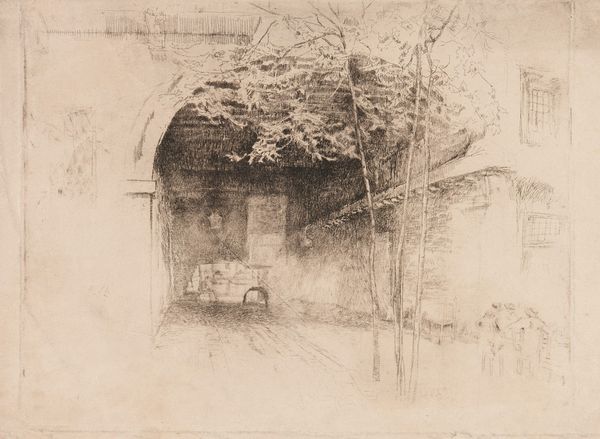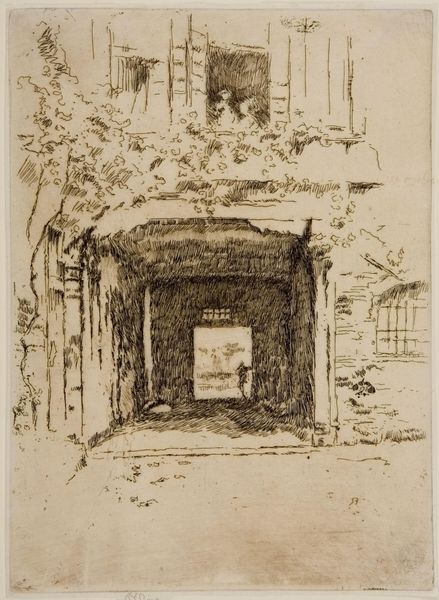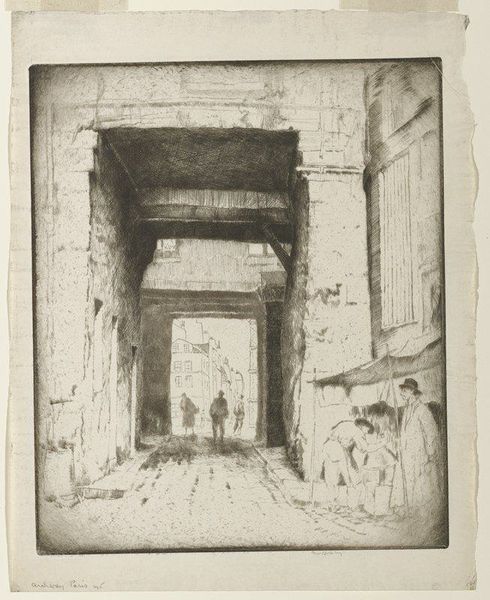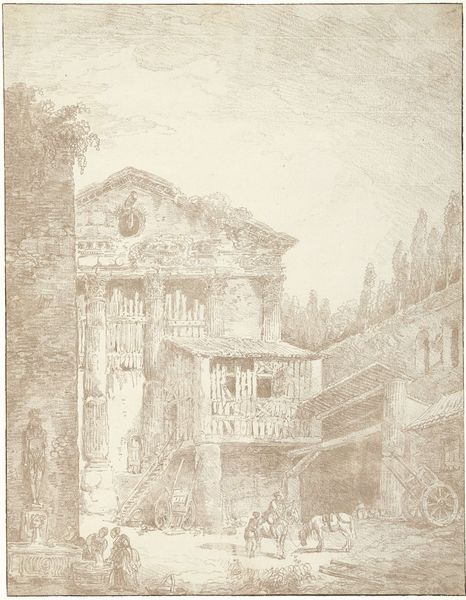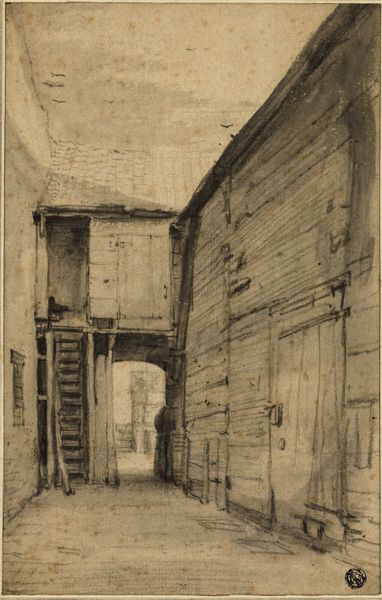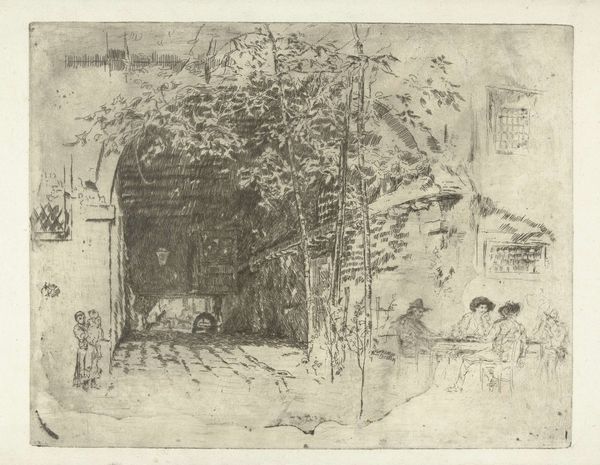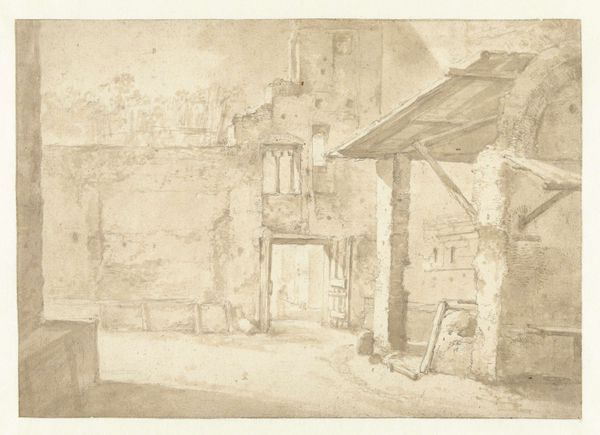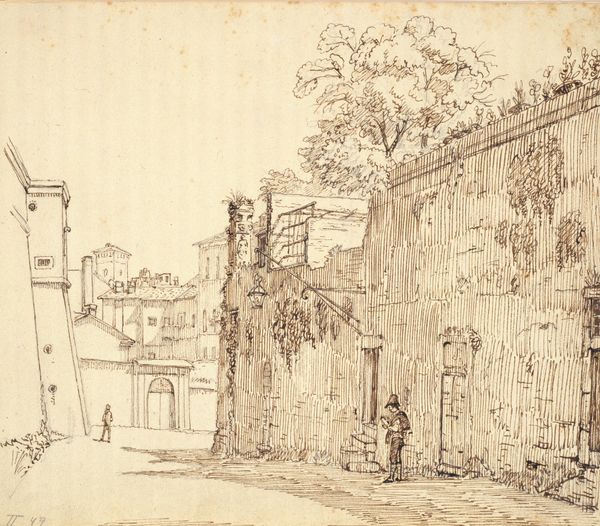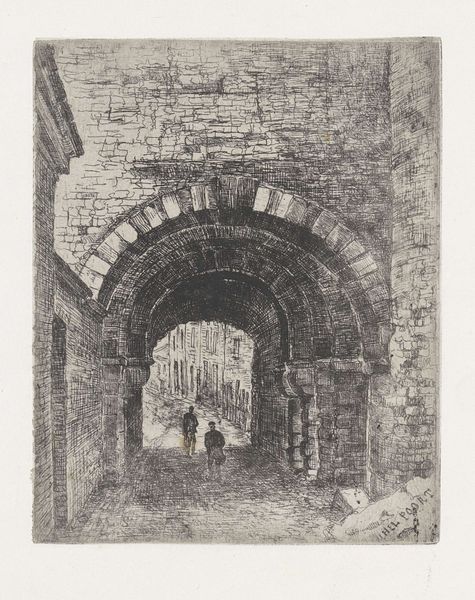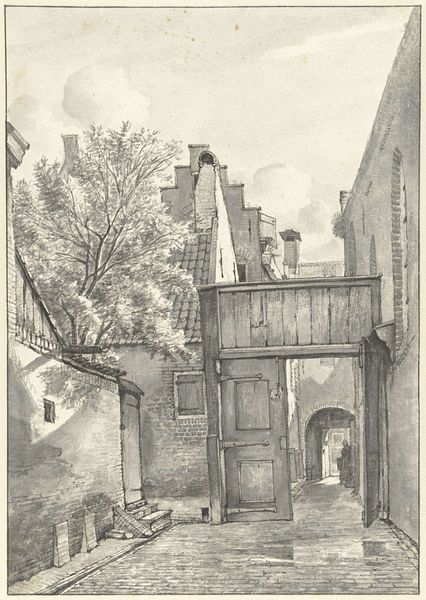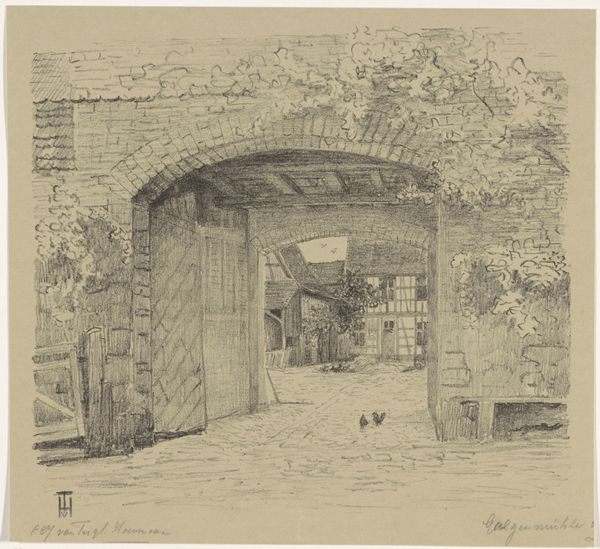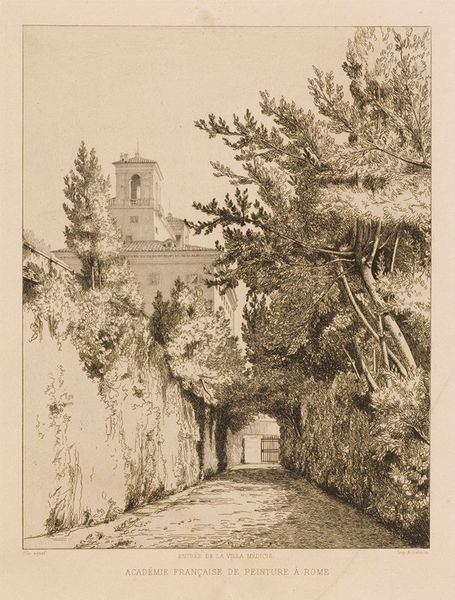
drawing, etching
#
drawing
#
impressionism
#
etching
#
etching
#
cityscape
Copyright: Public Domain: Artvee
Curator: This is "Doorway and Vine," an etching by James Abbott McNeill Whistler, likely created between 1879 and 1880. Editor: My first impression is that it's incredibly delicate. Almost ghostly, with a palpable sense of depth despite the sparseness of line. Curator: Whistler’s printmaking often blurred the lines between high art and craft. Think about the materials themselves – the copper plate, the acid used to etch, the paper it’s printed on. He was deeply engaged in the alchemical processes that transformed these base materials. Editor: And what about the social context? The industrial revolution was reshaping cities. Could this be a comment on urban life, the encroaching darkness and hidden corners alongside growth? The figures in the window, are they watching or trapped? Curator: Precisely. We know Whistler embraced "art for art's sake." He was rebelling against Victorian moralizing. Look how the doorway, the dominant architectural element, is almost consumed by organic material. A subversion, perhaps, of the perceived order of the city through the disorder of natural elements. Editor: It's fascinating how this was presented to the public then. Was it shown in galleries, and what were the popular critical responses to impressionism? How did people receive this aesthetic that privileged capturing fleeting effects over strict realism? Curator: Initial reactions to Whistler's approach were mixed. Some viewed him as a revolutionary, others as an insult to traditional artistry. What's important, though, is understanding that through shows and carefully managing his own reputation, Whistler transformed printmaking’s status in the art world. Editor: So it’s not just the scene depicted, it's also the cultural work the etching performed. It’s about claiming space for new kinds of artistic expression within existing institutional structures and public perceptions. Curator: Exactly. By exploring the interaction of the natural and built environment through a unique printing process, Whistler challenged us to reconsider where and how we assign value to art. Editor: It's interesting to consider the implications that it might have even now; our interpretations change in line with societal perceptions. Curator: And it highlights how close engagement with both materiality and cultural context expands the historical richness we can excavate from a work of art.
Comments
No comments
Be the first to comment and join the conversation on the ultimate creative platform.
